There is a significant event occurring with Betelgeuse. Over the past few weeks, the renowned red supergiant star located in the Orion constellation has been experiencing a drastic decline in brightness, causing speculation among scientists about the possibility of an imminent explosion. The most recent supernova observed was in 1987 with supernova 1987A, which occurred in the Large Magellanic Cloud, a neighboring galaxy to our Milky Way.
Is it possible for Betelgeuse to undergo a supernova explosion?
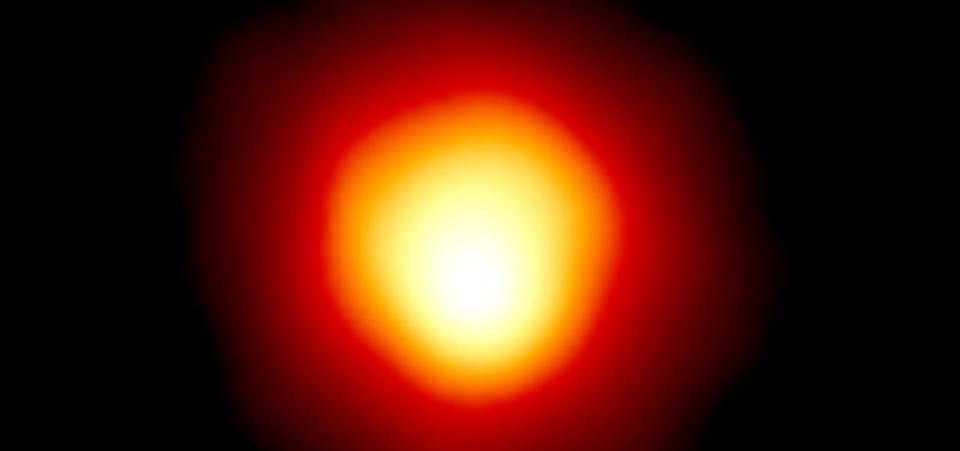
Assuming that there is an explosion, how would it manifest? Does the decrease in brightness indicate that an explosion is about to happen? Although all the focus is currently on Betelgeuse, it is highly unlikely that it will explode in the coming week. In the meantime, recent studies indicate that there are other massive stars in the Orion constellation that should be monitored closely.
Is Betelgeuse going to explode as a supernova?
Betelgeuse, which is approximately one thousand times larger than our Sun, experiences periodic dimming, but this is not considered surprising by astronomers. According to Alex Filippenko, an astrophysicist and professor of astronomy at the University of California, Berkeley, “The media and some astronomers tend to overemphasize this phenomenon.” Betelgeuse is a known variable star, and long-term observations have shown a predictable pattern of brightening and fading that occurs every six years, as well as shorter periods lasting around 400 days. Occasionally, these periods coincide, resulting in the greatest dimming. Currently, we are witnessing one of these dimming events.”
Additional factors exist. It is also acknowledged that Betelgeuse, a supergiant star, occasionally contains dust in its atmosphere, which can cause visual dimming. This phenomenon has been occurring for hundreds or even thousands of years, and there is no indication of an imminent explosion.
So when will Betelgeuse explode?
Researchers acknowledge that the possibility of Betelgeuse going supernova is always present. However, the current decrease in brightness is not out of the ordinary. It is predicted that Betelgeuse will most likely undergo a supernova event within the next 100,000 years, although this is purely speculative. Recent scientific models suggest that it could even take up to half a million years. The exact timing of the explosion relies on the star’s mass and its progression through the stages of stellar evolution.
What will be visible from Earth if Betelgeuse undergoes a supernova?
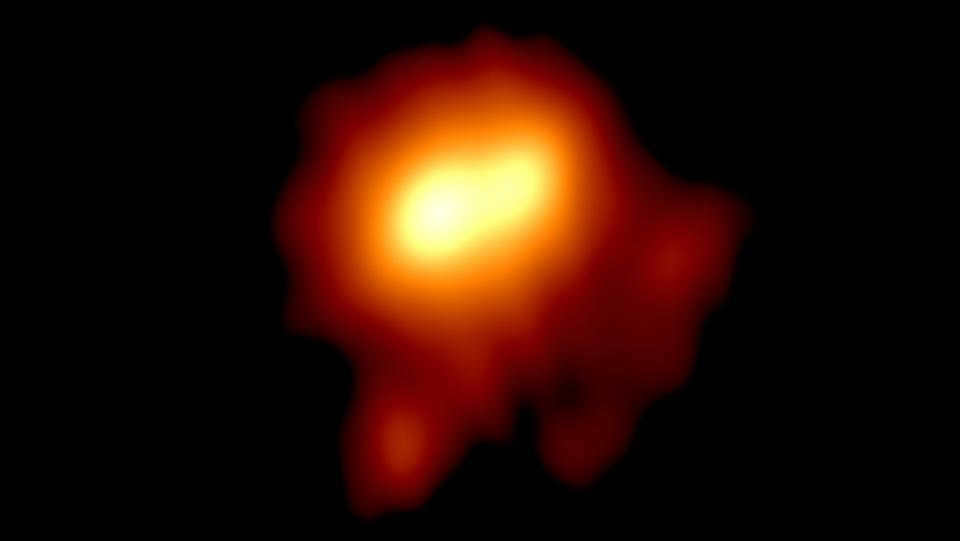
Scientists frequently mention the possibility of Betelgeuse becoming as luminous as the full moon shortly after a supernova explosion. However, astronomers do not possess definitive knowledge on this matter. “We estimate that Betelgeuse has a mass of about 20 solar masses, but it could potentially be as low as 15. Based on our observations of other similarly massive stars, it is suggested that if they reach a mass of 15 or 16 solar masses, they explode during the red supergiant phase,” explains Filippenko. “Such an explosion would maintain its brightness for approximately three months before gradually diminishing.”
Nevertheless, if Betelgeuse’s mass exceeds 20 or 22 solar masses, it may first shed a significant portion of its outer gas shell through a series of violent eruptions. Consequently, its brightness would diminish more rapidly.
Could there be other stars that have the potential to undergo supernova?
At this moment, scientists have not discovered any other star that may experience a supernova event before Betelgeuse. However, there is a possibility of Type 1a supernovae, which can happen when two stars revolve around each other, with one being a small and faint white dwarf. In such instances, an explosion can take place, although astronomers possess limited knowledge about white dwarfs within our own galaxy, the Milky Way.
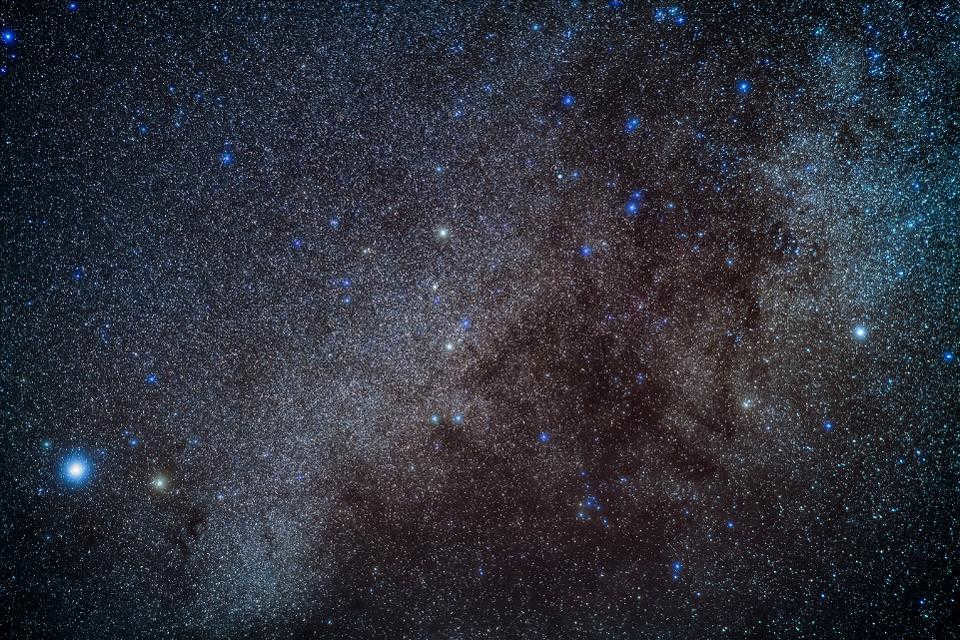
The “upcoming” one is projected to emerge in 2083
Betelgeuse might be the nearest star that is likely to go supernova in the not-so-distant future, even if it takes 100,000 years. However, certain astronomers now speculate that there is a star much closer that has the potential to become a brand new one. The star V Sagittae, positioned 7,800 light-years away in the minuscule constellation Sagittae (just below Swan in the stellar “triangle”), is barely visible even with medium-sized telescopes. Nevertheless, a recent investigation proposes that it might explode around the year 2083.
Although not as impressive as the explosion of Betelgeuse, the explosion of V Sagittae has the potential to reach the same level of brightness as Sirius, which is currently the most luminous star visible in the night sky. The timing of this event is uncertain, with a window of plus or minus 16 years, meaning it could occur anywhere between 2067 and 2099, most likely around the midpoint of that timeframe. Undoubtedly, it will be a magnificent display to behold.
Even though the average number of supernovae per galaxy is only one per hundred years, there are approximately 100 billion galaxies in the observable universe. According to Dr. Richard Muschocki from NASA’s Goddard Space Flight Center, over its 10 billion years of existence (to be exact, 13.7 billion years, but stars didn’t start forming for the first few hundred million years), the observable universe experiences 1 billion supernovae per year, or 30 per second! So, could the next supernova explosion be from Betelgeuse, the red giant star in the Milky Way?
If it occurs.
If the star known as Betelgeuse were to explode, it would become as bright as a full moon and maintain that level of brightness for an entire year. This massive explosion would be visible to the naked eye as a vibrant reddish dot in the winter sky across the globe. There is a possibility that Betelgeuse could go supernova within the next 100,000 years.
Many astronomers today speculate that the reason we have yet to discover intelligent life in the universe is due to the devastating impact of localized supernova explosions, which eradicate all forms of life within a specific region of the galaxy.
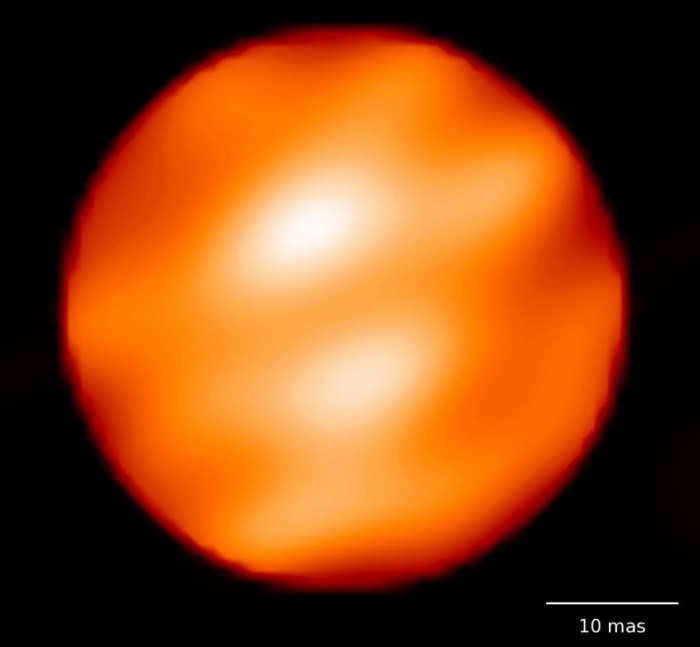
"The Hand of al-Jawza."
In the past decade, there has been a significant reduction in the size of Betelgeuse, the red giant star. Despite this shrinkage, it continues to emit the same level of brightness as before. If Betelgeuse were part of our solar system, it would have been large enough to reach the orbit of Jupiter.
Betelgeuse is easily visible in the Orion constellation and derives its name from Arabic. This star is famous for inspiring the character played by Michael Keaton in the movie Beetlejuice and serving as the home system of President Zaphod Beeblebrox in the Hitchhiker’s Guide to the Galaxy series.
Red giants are thought to experience brief, intricate, and chaotic existences. With a lifespan of just a few million years, they consume hydrogen fuel at a rapid pace before transitioning to helium, carbon, and various other elements. Periodically, they undergo contractions and eruptions.
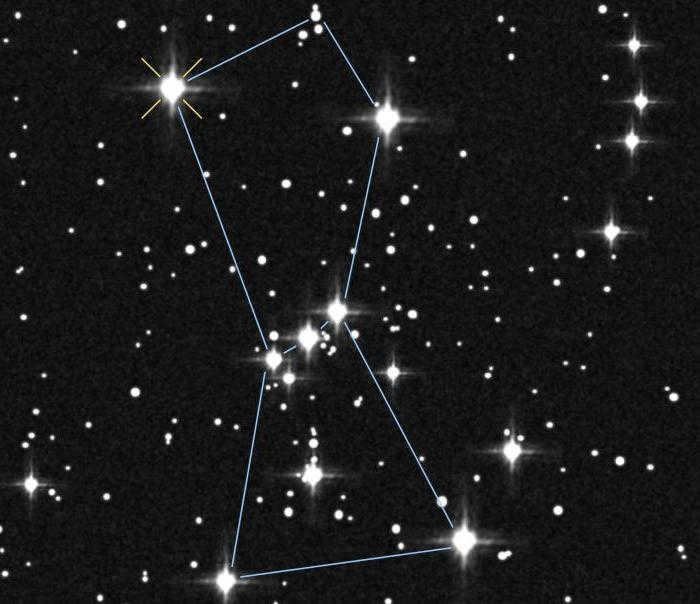

Betelgeuse: an imminent supernova explosion
Scientists have reason to believe that Betelgeuse, a star nearing the end of its lifecycle, is on the verge of a massive explosion that occurs when one fusion fuel is replaced by another.
The exact cause of Betelgeuse’s contraction is still unknown. Despite our knowledge of galaxies and the distant universe, there is still much to be learned about stars, especially when it comes to the final stages of red giants.
If the explosion of the star Betelgeuse were to happen and it were to go supernova, it would give astronomers on Earth the opportunity to observe it and study the underlying physics. However, the exact timing of this event remains uncertain. Despite rumors suggesting that Betelgeuse would explode in 2012, the truth is that the timing of the explosion is still unknown. As of now, this event has not occurred, as the likelihood of such an occurrence is extremely low. It is possible that Betelgeuse could go supernova tomorrow night, or it could potentially last for another 100,000 years.
It’s quite a distance away
In order to cause irreparable damage to Earth, a supernova must occur within a radius of less than 100 light-years. Does Betelgeuse meet this criteria? The explosion would not pose any threat to our planet, as the star would need to be much closer than its current distance. The distance to the Hand of al-Jawza is approximately 600 light years.
Betelgeuse is widely known as one of the most luminous stars. It is ten times larger than the Sun and only 10 million years old. The larger a star is, the shorter its lifespan. This is why astronomers are particularly interested in Betelgeuse. The red giant is expected to go supernova in the near future.
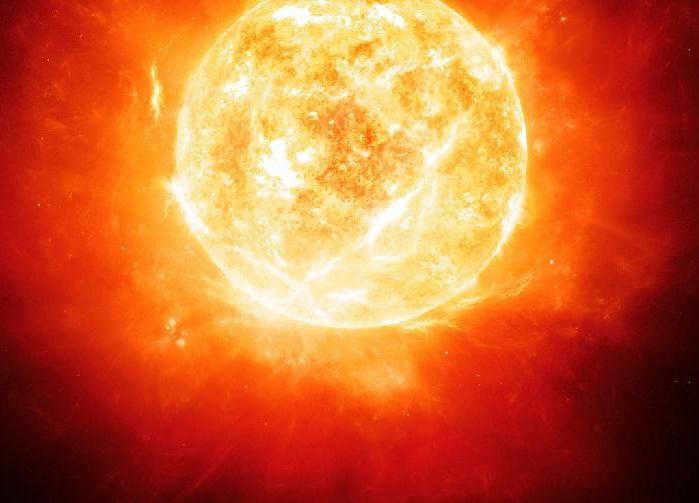
Supernova SN2007bi
In the latter part of 2009, astronomers bore witness to the most significant detonation ever documented. The massive supergiant star, with a mass two hundred times that of the Sun, was completely obliterated by an impromptu thermonuclear reaction triggered by the generation of antimatter, which in turn was instigated by gamma rays. This serves as an illustration of the potential outcome when Betelgeuse undergoes a collapse. The explosion remained visible for several months as it released a colossal cloud of radioactive material fifty times the size of the Sun and emitted a nuclear fission glow that could be discerned from remote galaxies.
The occurrence of the supernova SN2007bi exemplifies a phenomenon known as a “vapor instability” breakdown. Its manifestation can be likened to the detonation of an atomic bomb caused by the compression of plutonium. When reaching sizes of approximately four megayottagrams (equivalent to thirty-two zeros), massive stars are prevented from undergoing gravitational collapse due to the pressure exerted by gamma rays. The temperature of the nucleus directly affects the energy level of the γ-rays. However, if the γ-rays possess excessive energy, they can transform pure energy into electron-positron pairs of matter and antimatter while traversing the atom. Consequently, the entire core of the star functions as a colossal accelerator for elementary particles.
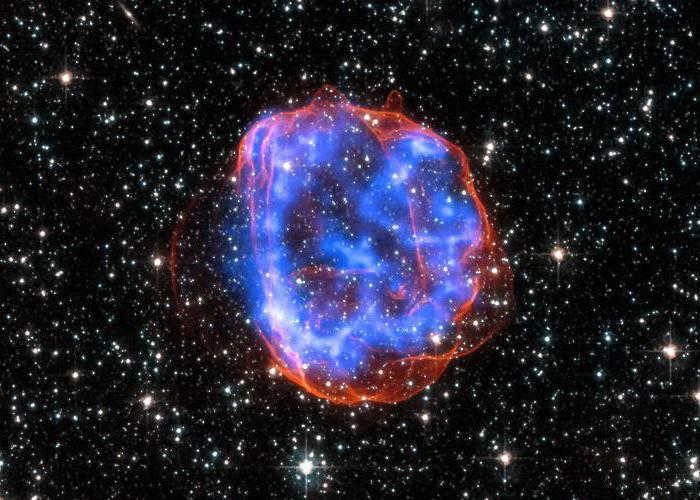
An explosion as massive as 11 suns.
The collision of antimatter with its counterpart results in annihilation, however, the issue lies in the speed of the explosion. While it is incredibly fast, there is a critical delay in the creation of gamma pressure that prevents the collapse of the star. The outer layers begin to sag, causing compression in the core and an increase in temperature. This raises the chances of more powerful gamma rays generating antimatter, and suddenly, the entire star transforms into an uncontrollable nuclear reactor. The magnitude of this event is unimaginable – the entire thermonuclear core detonates instantaneously, similar to a thermonuclear bomb that surpasses not only the size of the Sun but also the mass of 11 stars.
Nothing remains except for a growing cloud of fresh radioactive substances and vacant space where the most colossal entity once existed, with no trace of a black hole or neutron star. The detonation initiates extensive reactions, converting substance into novel radioactive components.
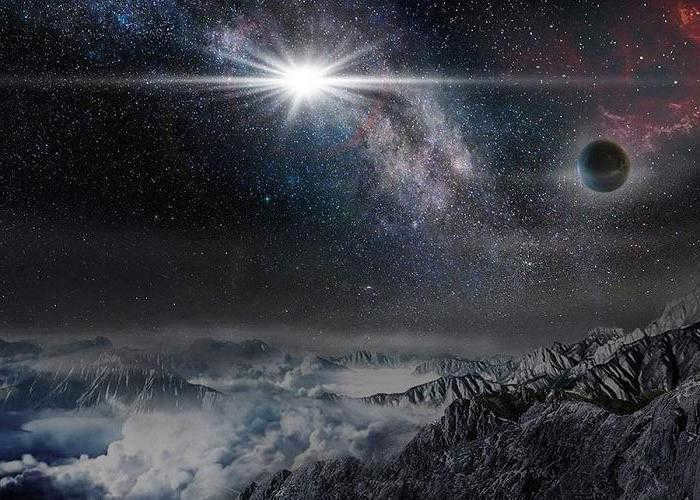
Deadly Celestial Bodies
There exist a few extraordinary celestial bodies – the true destroyers, known as type 11 hypernovae, which emit lethal gamma-ray bursts (GRBs). If we were to compare them to Betelgeuse, the explosion of one of these objects would release 1000 times more energy. In 2003, solid evidence of the GRB model emerged.
It occurred partly as a result of an explosion in the vicinity, with astronomers using the Gamma-ray Burst Coordinate Network (GCN) to pinpoint its location. On March 29, 2003, the burst came close enough to require further observations in order to unravel the mystery of gamma-ray bursts. The afterglow’s optical spectrum closely resembled that of SN1998bw. Additionally, X-ray satellite observations revealed the same distinct characteristic – the presence of oxygen that had been “shocked” and “heated,” a feature also found in supernovae. As a result, astronomers were able to conclude that the “afterglow” of a relatively nearby gamma-ray burst, situated “just” two billion light-years away from Earth, bears a resemblance to a supernova.
It remains uncertain whether every hypernova is linked to a GRB. Nevertheless, scientists approximate that only one out of every 100,000 supernovae generates a hypernova. This equates to approximately one gamma-ray burst daily, which aligns with current observations.
What is highly likely is that the central core involved in the creation of the hypernova possesses sufficient mass to develop into a black hole instead of a neutron star. Hence, each observed GRB represents the “call” of a newly formed black hole.
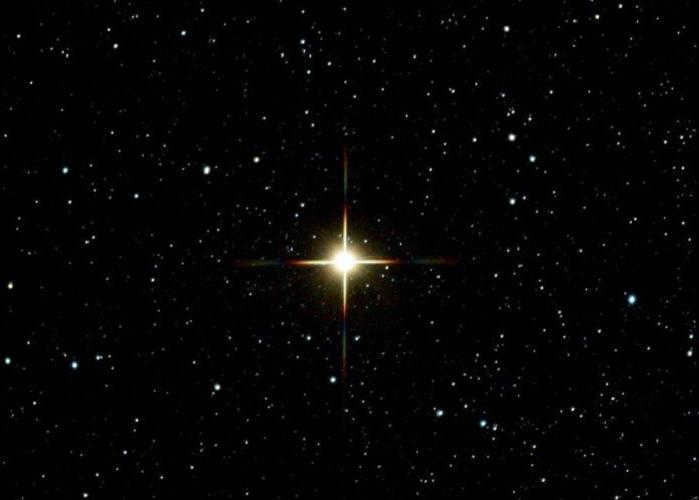
A double system with a white dwarf in the T Compass constellation
The International Ultraviolet Explorer satellite has recently observed the T Compass system in the Compass constellation, revealing that the white dwarf is actually part of a double system. This system is located approximately 3,260 light-years away from Earth, which is much closer than the previous estimate of 6,000 light-years.
Interestingly, the white dwarf in this system is known to be a recurring nova, meaning that thermonuclear explosions occur every 20 years. Historical records show that these explosions occurred in 1967, 1944, 1920, 1902, and 1890. It is important to note that these explosions are not supernovae and do not pose any threat to Earth. However, astronomers are still puzzled as to why the interval between these flares has increased over time.
Scientists hypothesize that the explosions of nova occur when a dwarf star accumulates hydrogen-rich gases from its companion, causing an increase in mass. Once the mass surpasses a certain threshold, a nova outburst ensues. The direction of mass change during the pump-and-bang cycle remains uncertain; however, if it reaches the Chandrasekar limit, the dwarf star will transform into a Type 1a supernova. During this transformation, the dwarf star will contract and a powerful burst will transpire, resulting in its complete obliteration. Unlike a regular supernova, this type of event releases energy that is 10 million times greater.
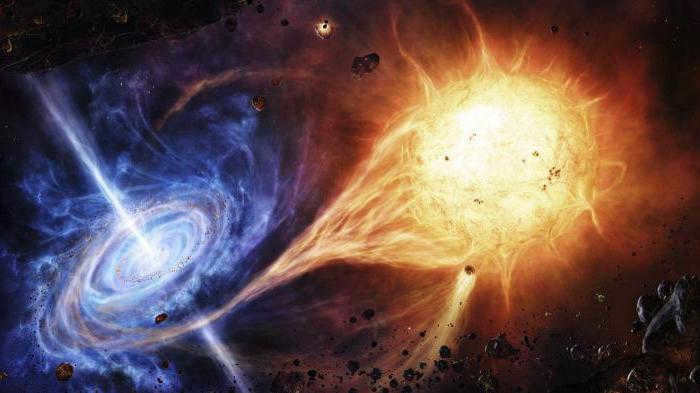
Equivalent to the energy of a thousand suns
When the white dwarf experiences nova outbursts, it appears that its mass is increasing. This conclusion is supported by data from the Hubble Telescope, which shows the release of material during previous explosions. According to models, it is estimated that the white dwarf will reach the Chandrasekar limit within the next 10 million years, or possibly even sooner.
Scientists have determined that if a supernova were to occur, it would release gamma rays with an energy equivalent to that of 1,000 solar flares happening simultaneously. This poses a greater danger than the explosion of Betelgeuse. Once the gamma radiation reaches Earth, it has the potential to generate nitrogen oxides, which could potentially harm and even destroy the ozone layer. The supernova would shine as brightly as all the other stars in the Milky Way combined. Dr. Edward Sion, an astronomer from Villanova University, believes that it could potentially explode within the time frames typically considered by astronomers and geologists, but for humans, this event is still far off in the distant future.
Opinions vary
Astronomers have differing opinions on the potential impact of supernova outbreaks that occur within 100 light-years of Earth. While some believe that such an event would be catastrophic, the exact consequences are still unclear and would depend on the intensity of the explosion. The research team suggests that a closer and more powerful flash than the Betelgeuse explosion is possible. The timing of such an event remains unknown, but it is expected to cause significant damage to Earth. However, other experts, like Alex Filippenko from the University of California at Berkeley, who specializes in supernovae, active galaxies, black holes, gamma-ray bursts, and the expansion of the universe, disagree with these calculations. They believe that even if a flare were to occur, it is unlikely to harm the planet.
Betelgeuse, situated in the Orion constellation, is widely known as one of the most luminous stars in our galaxy. Scientists have been closely monitoring its behavior for a considerable period of time. However, there has been a recent cause for concern as Betelgeuse has experienced an unexpected dimming. Initially, astronomers speculated that the star had undergone a massive explosion. Nevertheless, subsequent observations have disproven this hypothesis, revealing that the red giant merely emitted a small amount of space dust.
The unexpected decrease in luminosity of Betelgeuse
Researchers have been closely monitoring Betelgeuse for an extended period: its characteristics were documented as far back as Ptolemy’s treatises from the 2nd century AD. This massive red giant star possesses a staggering radius of 617,100,000 kilometers, which is approximately 887 times larger than that of the Sun. To put it into perspective, the photo below illustrates how Betelgeuse is so immense that it completely engulfs the orbit of Jupiter.
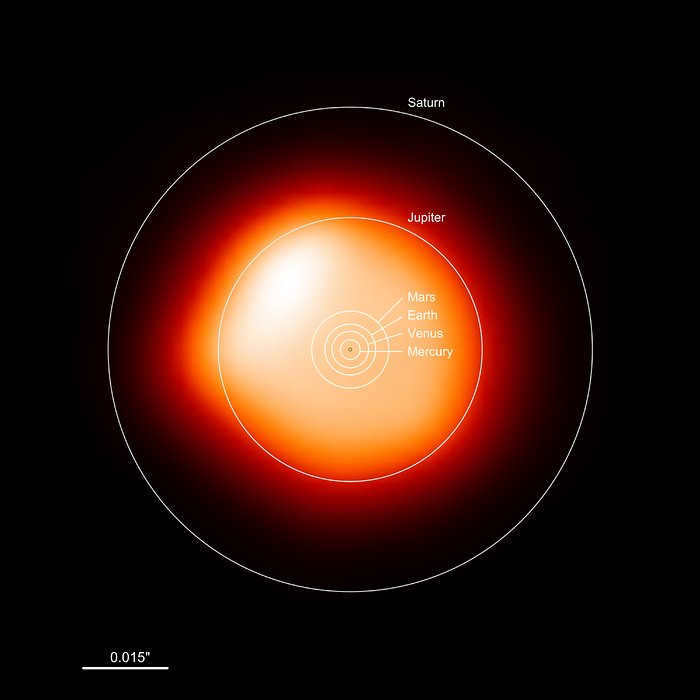
For many years, there have been no changes observed in the light emitted by Betelgeuse. However, in December 2019, astronomers observed a significant decrease in the star’s brightness. The intensity of the light gradually diminished, and by February 2020, the red giant was almost completely extinguished. Concurrently, a hypothesis emerged suggesting that Betelgeuse is nearing the end of its lifespan. It was predicted that the star would soon undergo a supernova explosion, transitioning into a Type II supernova. This conclusion was drawn based on the size and properties of the red giant.
The massive celestial body has the potential to undergo a cataclysmic detonation at any given instant
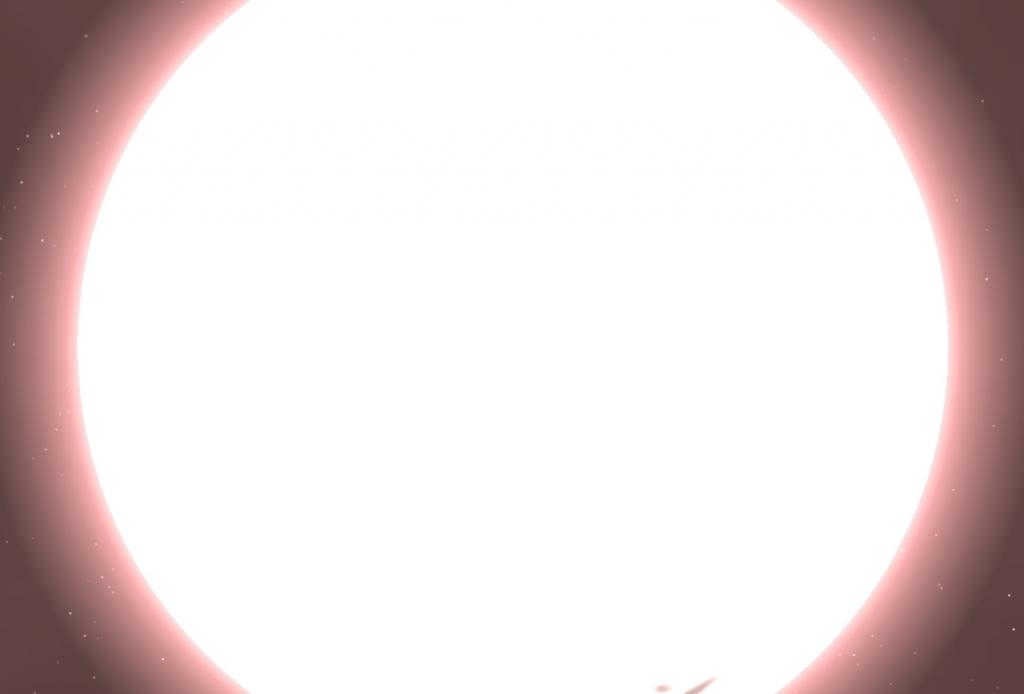
Betelgeuse, being an incredibly massive star, is also incredibly hot. In fact, its surface temperature is significantly higher than that of the Sun. As a result, Betelgeuse burns through its fuel at a much faster rate compared to smaller stars. This faster burning process is the reason why red giants like Betelgeuse have relatively short lifespans in comparison to other stars. Scientists estimate that Betelgeuse is only 10 million years old, whereas our own Sun is 450 times older. Despite the fact that Betelgeuse could potentially explode at any moment, the Sun will continue to exist in its current state for at least the next 100 thousand years.
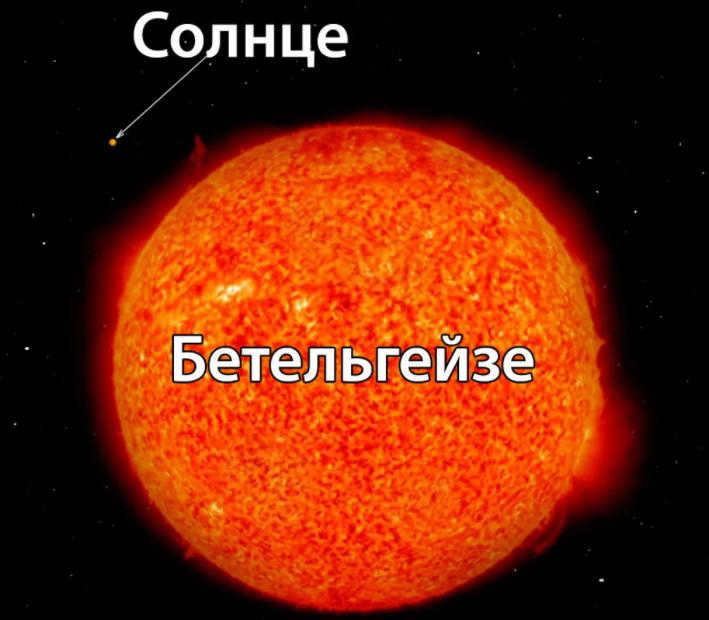
Prior to the detonation of the red giant, its luminosity attains its peak levels. Subsequently, it begins to progressively diminish. If Betelgeuse were to undergo a supernova event, an immense burst would become visible in the celestial expanse. The stellar body would experience a substantial expansion, ultimately surpassing the Moon in radiance at its zenith.
However, the luminosity was diminished due to the accumulation of cosmic debris, rather than the detonation
Contrary to expectations, the celestial body did not undergo a catastrophic explosion; it simply experienced a noticeable decline in brilliance. Remarkably, the star’s physical dimensions remained unaltered, and no sudden surge in luminosity was observed by astronomers. The enigma surrounding Betelgeuse’s transformation prompted scientists to meticulously analyze the data procured from the Hubble Space Telescope. Consequently, astronomers have posited an alternative hypothesis: the fading phenomenon may have originated from the emergence of interstellar particles, which materialized in the aftermath of an ejection event occurring on the surface of Betelgeuse.
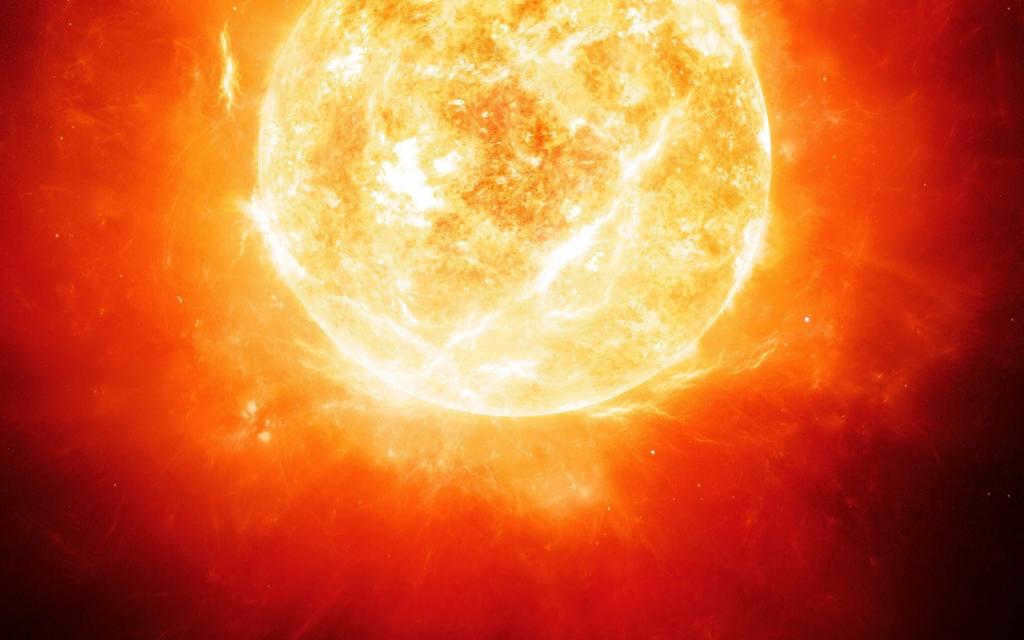
There was a belief that Betelgeuse expelled a massive sphere of extremely hot gas into its orbital path. This sphere rapidly cooled down and collapsed, forming cosmic dust that enveloped the star.
What exactly is cosmic dust?
To validate this theory, a separate team of astronomers undertook an autonomous investigation utilizing a submillimeter telescope. This advanced instrument specifically monitors a specific segment of the electromagnetic spectrum.
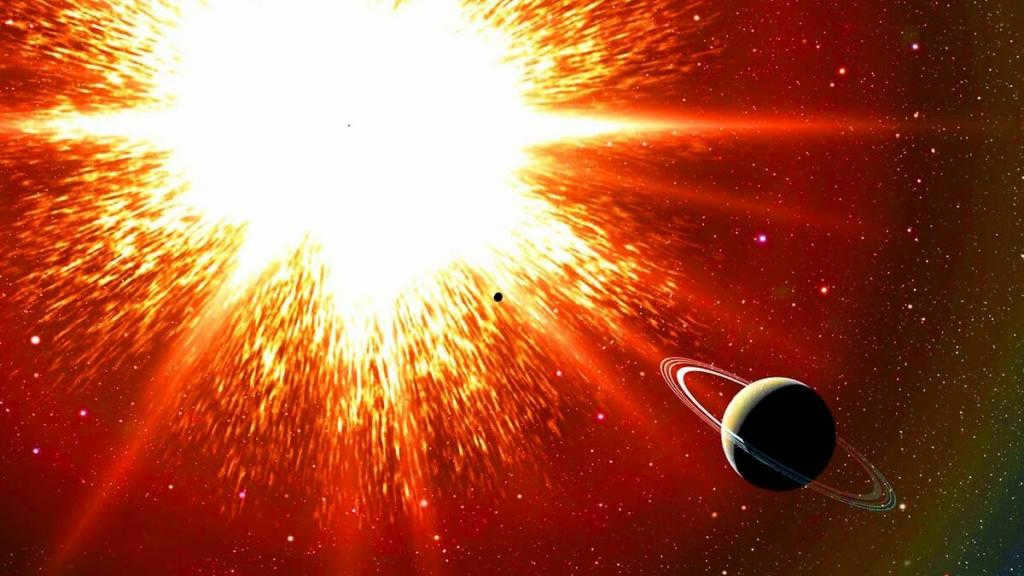
The analysis of this spectrum aids astronomers in identifying extensive clusters of water vapor in the vicinity of planets and stars. Additionally, it is utilized to ascertain the existence of molecular oxygen. Submillimeter telescopes have the capability to effortlessly perceive the constituents that constitute stars and planets.
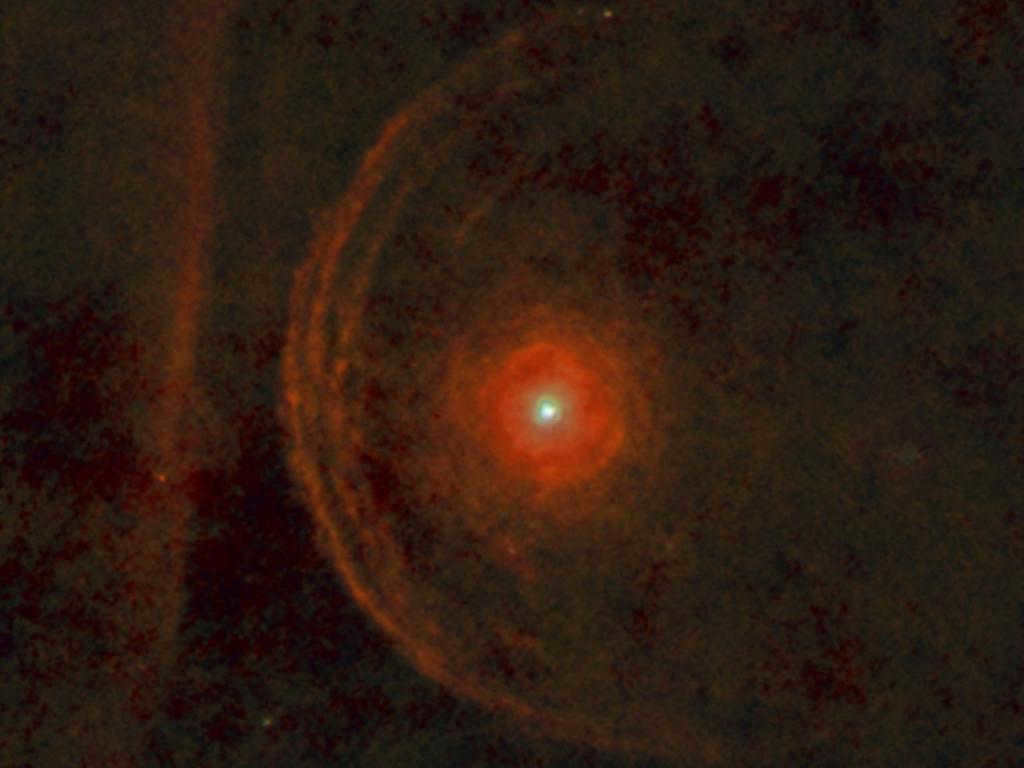
When Betelgeuse was observed by astronomer James Clerk Maxwell, there was no noticeable increase in brightness, despite the presence of cosmic dust. The lack of reaction from the sub-millimeter telescope indicates that there was no explosion of red-hot gas. This raises the question of why Betelgeuse experienced a decrease in brightness.
Scientists have already witnessed the dimming of the colossal star
The solution was discovered through a recent examination of a different star, VY Big Dog. This particular red giant also actively consumes oxygen and shares many similarities with Betelgeuse. The investigation revealed that massive stars frequently expel a portion of their mass into orbit. These giants are encircled by an immense gas bubble, within which new stars are later formed from the constituent particles.
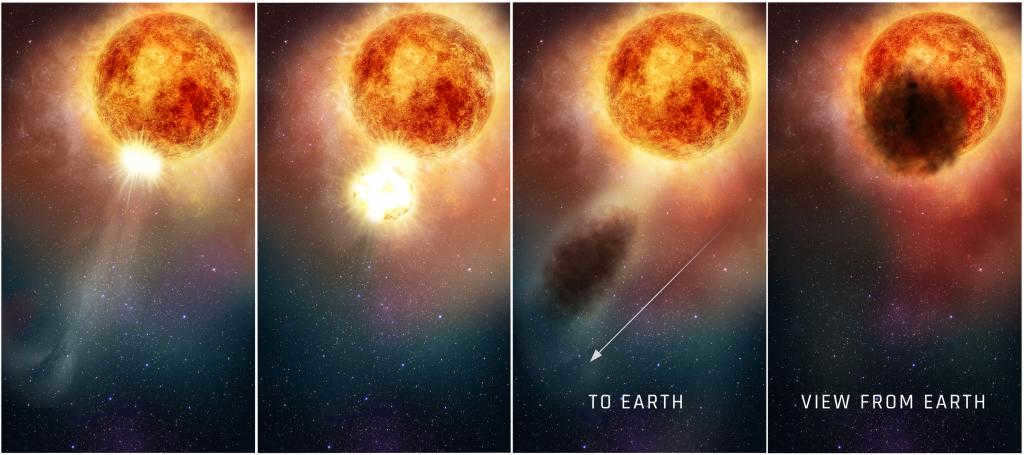
It was discovered that the brightness of VY Big Dog was also diminishing. Observations of the star indicated that it dimmed on two separate occasions. The initial dimming of its surface was recorded during the 1880s and 1890s. It occurred once more after a span of 30 years. The colossal star experienced another drop in brightness and remained faint throughout the 1920s and 1940s. The luminosity of VY Big Dog constantly fluctuates, reaching maximum levels and then declining once again.
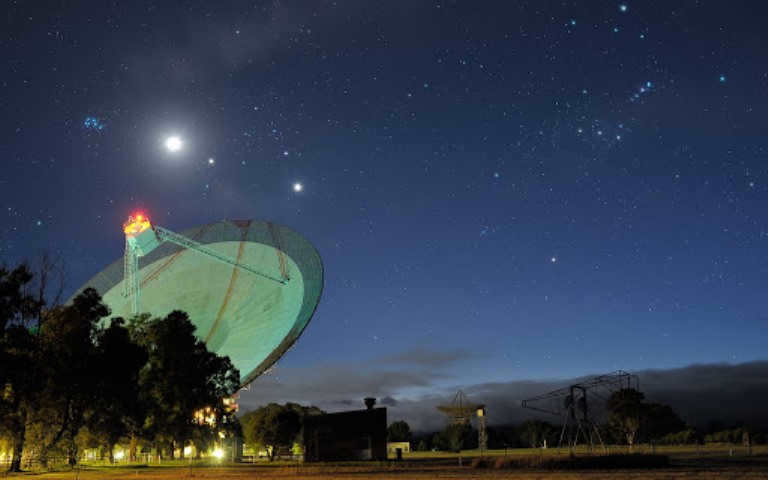
One possible explanation for this phenomenon could be the star’s size. Red giants, like Betelgeuse, have a slower dust accumulation process, resulting in larger emissions. It appears that Betelgeuse recently experienced a small eruption, expelling dust particles that dispersed throughout its surrounding gas envelope and absorbed the star’s emitted light.
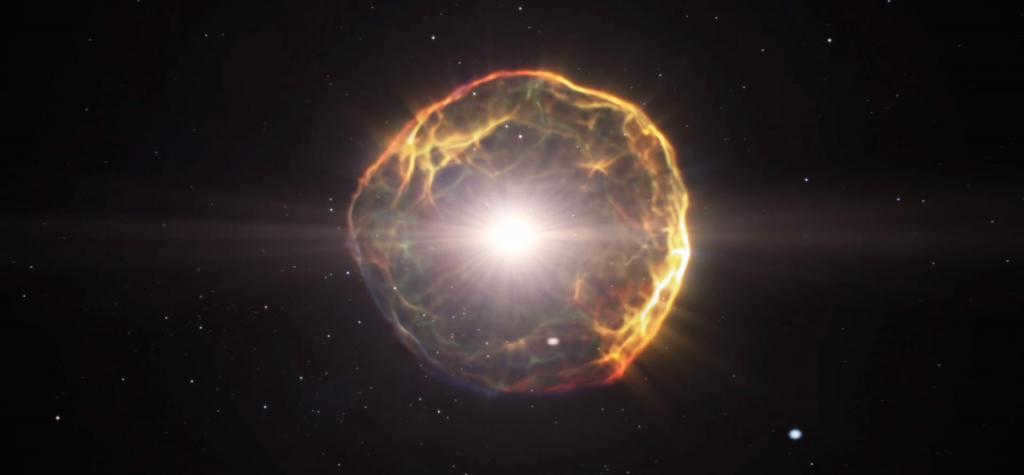
The explosion of the red giant was a letdown for numerous astronomers who had anticipated witnessing it firsthand. However, researchers persist in monitoring Betelgeuse and patiently await its restoration to its former luminosity. It is conceivable that this progression may extend over several decades.

Our subscribers often ask us the same question over and over again:
If a supernova like Betelgeuse were to explode, would we experience radiation effects and see a “second sun” in the sky?
We have previously written articles about Betelgeuse, but since it keeps being asked, we feel obliged to provide an answer. In this article, we will explore whether the explosion of this supergiant star could potentially pose harm to our planet and humanity as a whole.
When is the expected time for the explosion of Betelgeuse?
Betelgeuse, a red supergiant located in the constellation of Orion, is positioned approximately 724 light-years away from Earth. The sheer magnitude of this star is mind-boggling: if we were to replace our Sun with Betelgeuse in our solar system, it would engulf everything up to the orbit of Jupiter. Additionally, this giant has a mass that is estimated to be 17 times greater than that of the Sun.
Considering these exceptional attributes, scientists have long speculated that this red supergiant is in its final stages of evolution and will imminently conclude its existence with a supernova explosion, ultimately transforming into a white dwarf. However, recent studies have indicated that Betelgeuse is still relatively young, suggesting that we may witness a supernova burst in the near future.
How would Betelgeuse’s explosion appear from Earth?
Astronomers have used modern modeling to gain a better understanding of what the explosion of Betelgeuse would look like from Earth. While there is still some uncertainty about the exact outcome, scientists are continuously improving their predictions by studying other supernovae.
Based on the latest data, Betelgeuse’s explosion would shine nine times fainter than the full Moon. This intense light would originate from a single point, allowing the object to be visible in the daytime sky. At night, we would be able to see our own shadow cast by this light.
According to scientists, the supernova would be visible in the daytime sky for approximately a year, and its effects would be visible to the naked eye at night for several years until it gradually faded away.
What are the effects of radiation released by a supernova?
When it comes to Betelgeuse, its explosion would not have any significant impact on life on Earth, as it is located at a considerable distance. While the radiation might still have some minimal effects on life, they would be negligible. For the radiation to pose a serious threat to life, the supernova would have to occur much closer to Earth, possibly within several tens of light years. However, Betelgeuse is situated well beyond this range, with recent research indicating that the supergiant star is approximately 724 light-years away, which places it far outside the danger zone. Therefore, there is no cause for concern.





